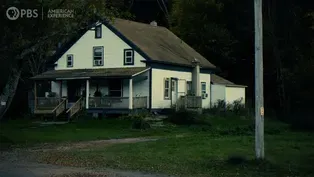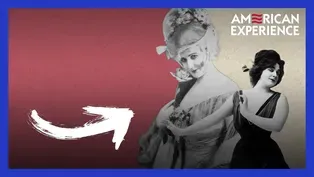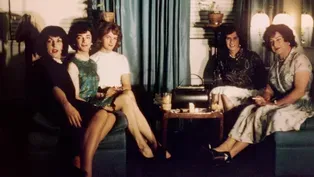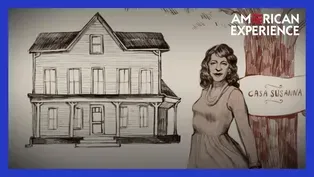
(Trans)formation: The Story of Christine Jorgensen
Clip: Season 35 Episode 6 | 14m 57sVideo has Closed Captions
Christine Jorgensen was one of the first people to undergo gender affirmation surgery.
Christine Jorgensen was one of the first people to successfully undergo gender affirmation surgery.
Problems with Closed Captions? Closed Captioning Feedback
Problems with Closed Captions? Closed Captioning Feedback
Corporate sponsorship for American Experience is provided by Liberty Mutual Insurance and Carlisle Companies. Major funding by the Alfred P. Sloan Foundation.

(Trans)formation: The Story of Christine Jorgensen
Clip: Season 35 Episode 6 | 14m 57sVideo has Closed Captions
Christine Jorgensen was one of the first people to successfully undergo gender affirmation surgery.
Problems with Closed Captions? Closed Captioning Feedback
How to Watch American Experience
American Experience is available to stream on pbs.org and the free PBS App, available on iPhone, Apple TV, Android TV, Android smartphones, Amazon Fire TV, Amazon Fire Tablet, Roku, Samsung Smart TV, and Vizio.
Buy Now
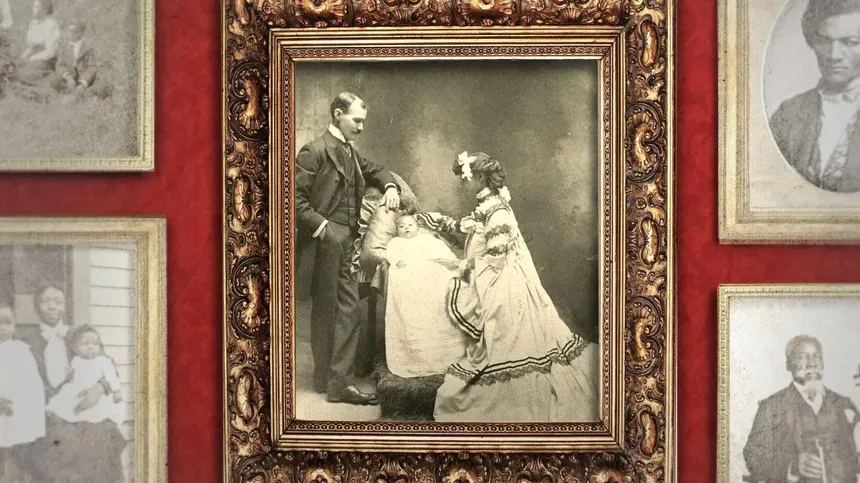
When is a photo an act of resistance?
For families that just decades earlier were torn apart by chattel slavery, being photographed together was proof of their resilience.Providing Support for PBS.org
Learn Moreabout PBS online sponsorshipANNOUNCER: Tonight, we are privileged in having with us a beautiful lady and a great performer-- Miss Christine Jorgensen!
(applause) JULES GILL-PETERSON: The Christine Jorgensen story is quintessentially American.
♪ I'm gonna live ♪ ♪ Till I die ♪ ♪ I'm gonna laugh instead of cry... ♪ GILL-PETERSON: The triumph of the individual, of science and technology, of the self that can be remade.
♪ Until my number's up, I'm gonna fill my cup ♪ SUSAN STRYKER: She is the person who brought what we now call "transgender" to the attention of a global audience.
She was literally the biggest story on the planet in 1952.
♪ I'm gonna live, live, live, live ♪ ♪ Live ♪ ♪ Until I die ♪ (applause) ♪ ♪ (phone ringing) WOMAN: Hello?
One moment please.
Hy Gardener calling.
♪ ♪ Chris, as a little boy, did you ever envy the little girls because of their clothes and their way of life?
Well, envied?
Yes, and I wouldn't say envied, Hy, but just didn't understand why I wasn't that way, too.
♪ ♪ EMILY SKIDMORE: Jorgensen was born George in 1926.
She grew up in the Bronx, and had sort of a traditional working-class American upbringing.
STRYKER: She was a very private, very shy person.
I think she felt a profound disconnect between how she experienced herself and how the world perceived her.
(film reel clicking) ♪ ♪ JORGENSEN: My point of no return, I believe, began from the first waking moment that I realized I was different.
There's a very, very big problem in the world with any child who has to live with the thought of being different.
(film reel clicking) She sort of stumbles onto an incredible discomfort with the gender that she had been assigned at birth and that she was being socialized into, right?
And so this kind of burgeoning awareness that, "Well, being a boy definitely doesn't make sense to me."
♪ ♪ SKIDMORE: She was really desperate for answers, right, and desperate for information to understand the struggles that she was experiencing.
There was a book that Jorgensen found-- the title was "The Male Hormone."
♪ ♪ GILL-PETERSON: You can imagine that sort of light bulb moment going something like, "Well, if this is how this system works, "if this is what makes a man, is this how you could unmake a man?"
STRYKER: That's a tremendously exciting moment-- the sense of, like, something that has been so locked up in my head can become real to other people by changing the appearance of my body.
♪ ♪ (birds chirping) (ship horn blares) ♪ ♪ GILL-PETERSON: In the late 1940s, the turn of the '50s, it's just a well-known fact amongst trans people that there's nowhere in the country where you can get this kind of procedure.
♪ ♪ STRYKER: Jorgensen had read that the kinds of surgical and hormonal interventions that she wanted were available in Copenhagen.
♪ ♪ GILL-PETERSON: For the doctor that she ends up connecting with, she is his first sort of patient.
You have to hand over your body, right, hand over your autonomy, to a medical professional who can't say, "Don't worry, I've done this a hundred times before."
STRYKER: I think she did express a lot of personal courage in just deciding, "I see this possibility for myself, "and it is the great unknown, but I'm just going to go for it."
(flashbulbs popping) ♪ ♪ SKIDMORE: The story on Jorgensen breaks on December 1, 1952.
(flashbulbs popping) Very, very quickly, she becomes the center of a media maelstrom.
STRYKER: Her story becomes the number one media story on the planet.
SKIDMORE: It reached sort of a frenzied pitch when she returned to the United States.
♪ ♪ JORGENSEN: When I looked out the window of the plane, I almost became panicky.
NEWSREEL REPORTER: An ex-G.I.
from the Bronx is back from Denmark where physicians converted him into a woman.
STRYKER: This tornado of publicity scoops her up, kind of like Dorothy in "The Wizard of Oz."
SKIDMORE: The journalists paid keen attention to the way that she walked, her dress, the tone of her voice, because this idea of someone transitioning was so brand new.
NEWSREEL REPORTER: High heels, smart feminine attire, and a friendly willingness to meet the press!
GILL-PETERSON: Her first sort of test run for being a woman in public after Denmark is, like, being hounded by the cameras.
Reporters swamp her, and she comes out of the airplane looking gorgeous, and walks straight into a press conference where people are asking her things like... Have you been offered a movie contract?
Yes, but I haven't accepted it.
Do you-- have you had any plans regarding the theater?
No, I don't think so.
STRYKER: Her story drove news of the nuclear bomb tests in the Pacific... (bomb bursting) The coronation of Queen Elizabeth... ♪ ♪ off the front pages of newspapers.
There were more words written about Jorgensen than about any other topic.
I'm very happy to be back, and I don't have any plans at the moment.
and I thank you all for coming, but I think it's too much.
Fine, thank you very much.
I think part of what is going on with the media storm is that in the 1950s, people were experiencing a technological euphoria.
♪ ♪ A lot of what's happening is just like, "Look what science can do now!
It can turn a man into a woman!"
♪ ♪ SKIDMORE: It was really a profound moment for trans people across the country, because they saw in Jorgensen the possibility of living as their authentic selves.
(flashbulbs popping) GILL-PETERSON: It shakes up everything.
♪ ♪ SKIDMORE: The newspaper stories about Jorgensen provided many trans people with a new language to articulate their feelings and their experiences.
Many of them reached out to Jorgensen.
♪ ♪ JORGENSEN: I received 20,000 or 30,000 letters.
I got fan mail from French Equatorial Africa and from various cities and areas which I never even heard about before.
STRYKER: Many of those letters were actually quite supportive.
Some were quite mean.
Somebody sent her a rusty razor blade and said, like, "Why don't you finish the job the doctors started?"
♪ ♪ NEWSREEL REPORTER: In the news once again is Christine Jorgensen, named as Woman of the Year by the Scandinavian Societies of Greater New York.
JORGENSEN: While some of the people were saying she shouldn't even be alive, they were saying, "You're woman of the year."
GILL-PETERSON: She was trying to offer something like the highest ideal of American white womanhood, and so that was meant to be very relatable and somehow respectable.
But the genius was that she combined that with the sheer titillation of who she had been.
STRYKER: I think she was given a very narrow path to walk in life under, like, harsh spotlights and, you know, under a microscope.
GILL-PETERSON: I think the immediate question for Christine when she bursts into celebrity is how do you ride that wave into a career?
(applause) So she has to go all in on cabaret.
♪ ♪ She becomes a celebrity for being trans.
It's really her only option.
♪ ♪ (applause) STRYKER: Her career as an entertainer took off almost immediately.
(applause) ♪ Another bride ♪ ♪ Another groom ♪ ♪ Gonna lower that marriage boom ♪ ♪ So why so tense, gents?
♪ ♪ Give me the license to make some... ♪ NIPSEY RUSSELL: When an audience is watching you perform, do you think they are looking at you as, as a freak attraction?
JORGENSEN: Well, there can be little doubt that there is a great part of my audience does have that attitude.
Fortunately, they have it when they come in, and from what I've heard from club owners that they seem to have a slightly different attitude when they go out.
♪ Christine is reckless ♪ ♪ She's really reckless ♪ ♪ To make some whoopee ♪ (cheers and applause) ALL: More!
Give us more!
Give us more!
(applause) Give us more!
(clamoring) ♪ ♪ SKIDMORE: In 1959, Jorgensen wanted to get married, and the state of New York actually denied her her marriage certificate because her birth certificate still said male.
STRYKER: She would've loved to have been married to a handsome man and had a career on stage and screen, and that would've been great.
And it just kind of didn't work out.
BBC HOST: You never married?
No, I'm still single.
Can I ask you why you never married?
I haven't found the right fella yet.
♪ ♪ GILL-PETERSON: I think her personal life is tough.
She couldn't just, like, meet a guy and get to know him a little bit before letting him know her history.
Every single guy already knows who she is, and the whole world wants a piece of her.
That must have just been a heavy burden to carry.
♪ ♪ JORGENSEN: I have always been conscious of the fact that, particularly at the beginning, that my conduct had to be controlled, so that they can't say "Well, see, look what this-- all transsexuals end up this way or that way."
♪ ♪ SKIDMORE: Jorgensen was so deliberate in how she presented herself.
She understood that she had to embody the social expectations around womanhood in order to legitimize trans womanhood.
♪ ♪ (distant children playing, waves roaring) STRYKER: I think at some level, she did feel trapped in her persona.
She kind of painted herself into a corner, and the world didn't give her a lot of other options.
By the early '60s, her audiences were smaller.
And so she, I think, then had to figure out what to do after that.
♪ ♪ In the later '60s and early 1970s, She kind of reinvented herself as elder statesman of the sexual liberation movement.
ANNOUNCER: Would you please give a warm welcome to Ms. Jorgensen.
(applause) She was drawing, like, 8,000, 10,000, 12,000 people to hear her speak.
JORGENSEN: Only in retrospect now can I look back and say, I know why this happened.
It was the beginning of the sexual revolution.
♪ ♪ ♪ Welcome to my world ♪ ♪ Won't you come on in?
♪ EMILY SKIDMORE: In the '70s and '80s, she presents as a much more open vision of femininity, much less restricted than we see in the 1950s.
And I think that's absolutely a response to the changes within American culture.
There's more sort of room for her to be a complex person than there was in 1952, 1953.
♪ Ask and you'll be given ♪ ♪ The key to this world of mine ♪ STRYKER: She felt a lot of pride in what it was that she had done.
Just like, "Wow, I did play a role "in changing public perception or educating people about the fact that people like me exist."
JORGENSEN: ♪ Welcome to my world ♪ (holding note) (applause) RUSSELL: Christine, do you think the time will ever come when your complete past, or at least this episode in your life will disappear, when people will think of you as Christine Jorgensen, photographer, or Christine Jorgensen, actress, and not as Christine Jorgensen, woman formerly man?
JORGENSEN: No, Mr. Russell, I don't think the time will ever really come, when the past, as you say, Christine Jorgensen, formerly a man, would ever be forgotten.
(film reel whirring) ♪ I'm a girl and by me that's only great ♪ ♪ I am proud that my silhouette is curvy ♪ ♪ That I walk with a sweet and girlish gait ♪ ♪ With my hips kind of swivelly and swervy ♪ ♪ When men say I'm cute and funny ♪ ♪ And my teeth aren't teeth but pearls ♪ ♪ I just lap it up like honey ♪ ♪ I enjoy being a girl ♪ (film reel stops)
Video has Closed Captions
Clip: S35 Ep6 | 8m 52s | Watch a preview of Casa Susanna. (8m 52s)
Clip: S35 Ep6 | 4m 44s | What exactly is Drag? How did it find its way into the limelight? (4m 44s)
Video has Closed Captions
Preview: S35 Ep6 | 2m 10s | Casa Susanna was a refuge for transgender women and cross-dressing men in the 1950s-60s. (2m 10s)
A Transgender Icon on the Place She Felt Safest
Clip: S35 Ep6 | 1m 58s | The diary of a magical night at Casa Susanna. (1m 58s)
Providing Support for PBS.org
Learn Moreabout PBS online sponsorshipSupport for PBS provided by:
Corporate sponsorship for American Experience is provided by Liberty Mutual Insurance and Carlisle Companies. Major funding by the Alfred P. Sloan Foundation.


